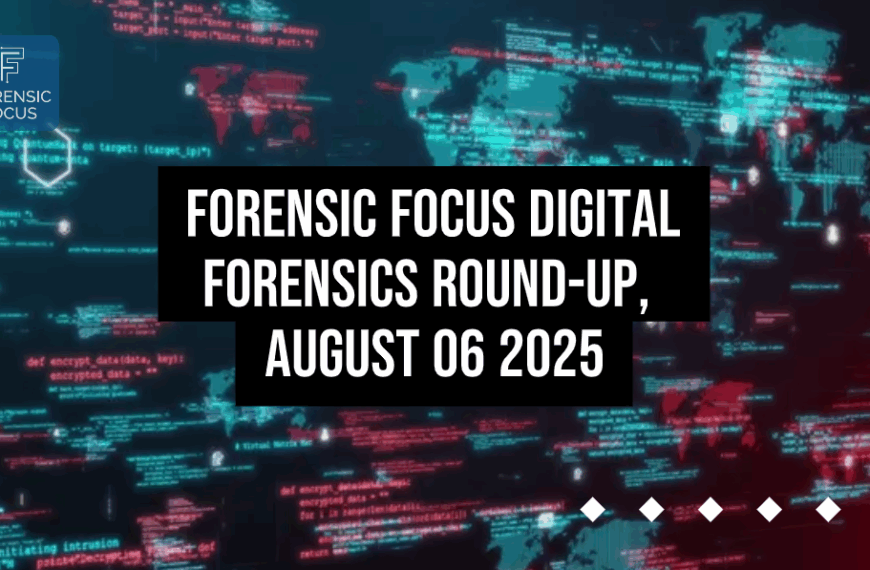A round-up of this week’s digital forensics news and views:
Cellebrite Launches 2026 Digital Forensics Industry Trends Survey
Cellebrite has opened its 2026 industry trends survey to gather insights from digital forensics professionals worldwide. The survey aims to identify emerging challenges, technological developments, and industry needs that will shape the future of digital investigations. Participants can contribute their expertise to help understand evolving trends in mobile forensics, AI integration, and investigative methodologies.
Court Accepts Fitbit Data as Legal Evidence in Personal Injury Case
A Canadian court has accepted data from a Fitbit fitness tracker as evidence in a personal injury lawsuit for the first time. The case involves a woman claiming her activity levels declined after a car accident, with lawyers using Fitbit data to demonstrate her reduced physical activity compared to baseline measurements. This landmark decision establishes a precedent for wearable technology data being used in legal proceedings.
Trucking Attorneys Must Understand Cell Phone Forensic Data Extraction
Legal professionals handling trucking cases need comprehensive knowledge of cell phone forensic data extraction procedures. Understanding how digital evidence is collected and analyzed from mobile devices is becoming crucial for building strong cases. The technical aspects of data recovery can significantly impact litigation outcomes in trucking-related legal matters.
UserAssist Registry Keys Prove Valuable for Digital Forensics
Digital forensics experts highlight the significant value of UserAssist registry artifacts for incident response investigations. These Windows registry entries track user application usage and can provide crucial evidence during security investigations. The artifacts offer detailed insights into user behavior patterns and application execution history that prove essential for cybersecurity professionals.
New RDP Lateral Movement Technique Uses Tiny Bitmaps to Hide Activity
Security researchers have discovered a novel lateral movement technique that exploits Remote Desktop Protocol (RDP) sessions by hiding malicious activity within tiny bitmap images. The method allows attackers to move laterally through networks while evading traditional detection mechanisms. This “ghost” technique leverages the way RDP handles bitmap data to conceal command execution and file transfers.
PowerLog Tool for System Performance Monitoring
A new system monitoring tool called PowerLog has been developed to track computer performance metrics and power consumption. The utility provides real-time data on CPU usage, memory consumption, and energy efficiency across different operating modes. PowerLog aims to help users optimize their system performance while managing power consumption more effectively.
Our Rescue Launches ICAC Connect Program to Combat Child Exploitation
Our Rescue, a non-profit organization focused on combating child trafficking and exploitation, announces the launch of its ICAC Connect Program. The initiative aims to strengthen coordination and support between Internet Crimes Against Children (ICAC) task forces nationwide. The program will provide enhanced resources, training, and technology to help law enforcement agencies better investigate and prosecute crimes involving the exploitation of children online.
Indianapolis Police Deploy Mobile Forensics Lab for Child Exploitation Cases
The Indianapolis Metropolitan Police Department has launched a new mobile forensics laboratory specifically designed to investigate internet crimes against children. The specialized vehicle allows investigators to process digital evidence on-site, significantly reducing the time needed to analyze devices in child exploitation cases. The mobile lab represents a major advancement in the department’s ability to quickly respond to and investigate crimes involving the sexual exploitation of minors.







